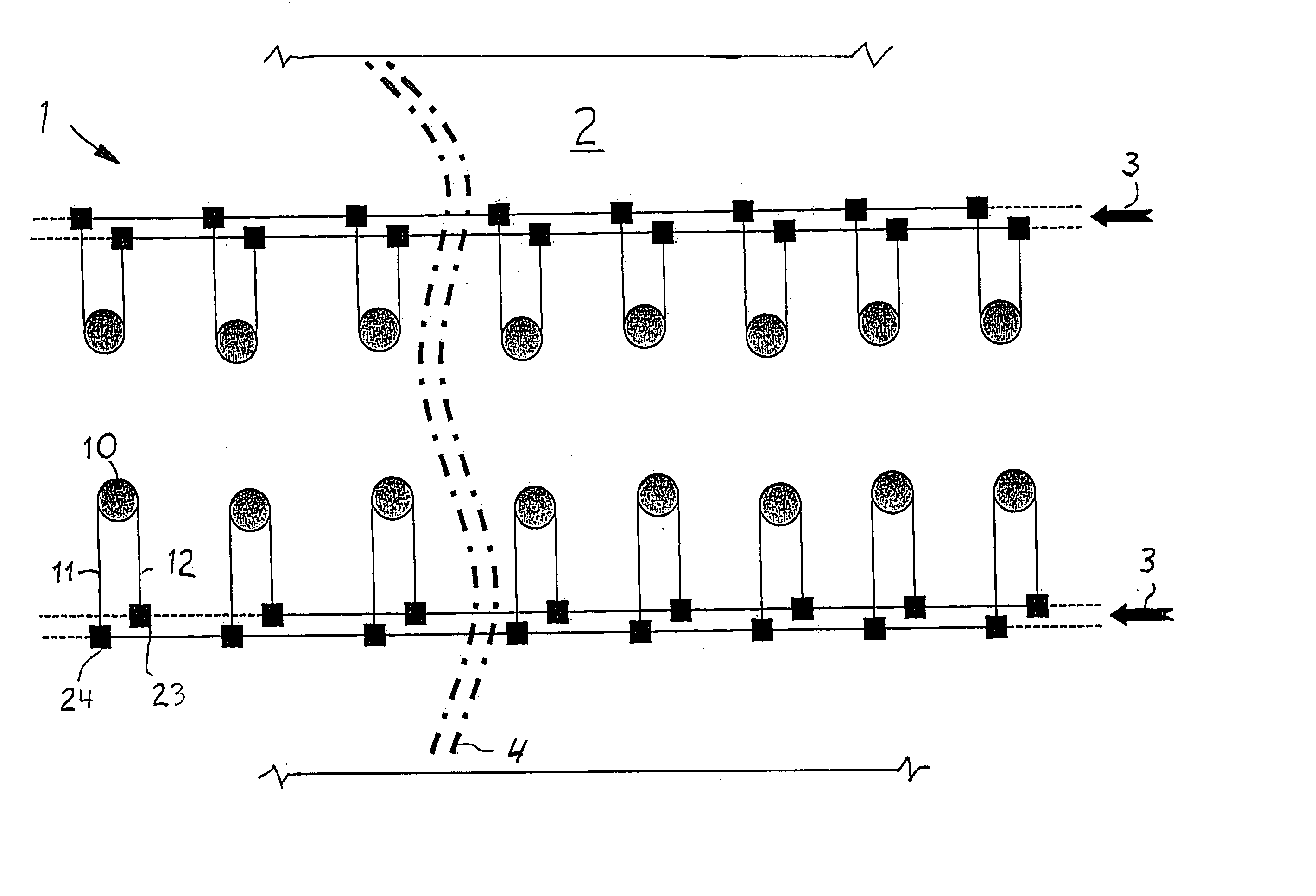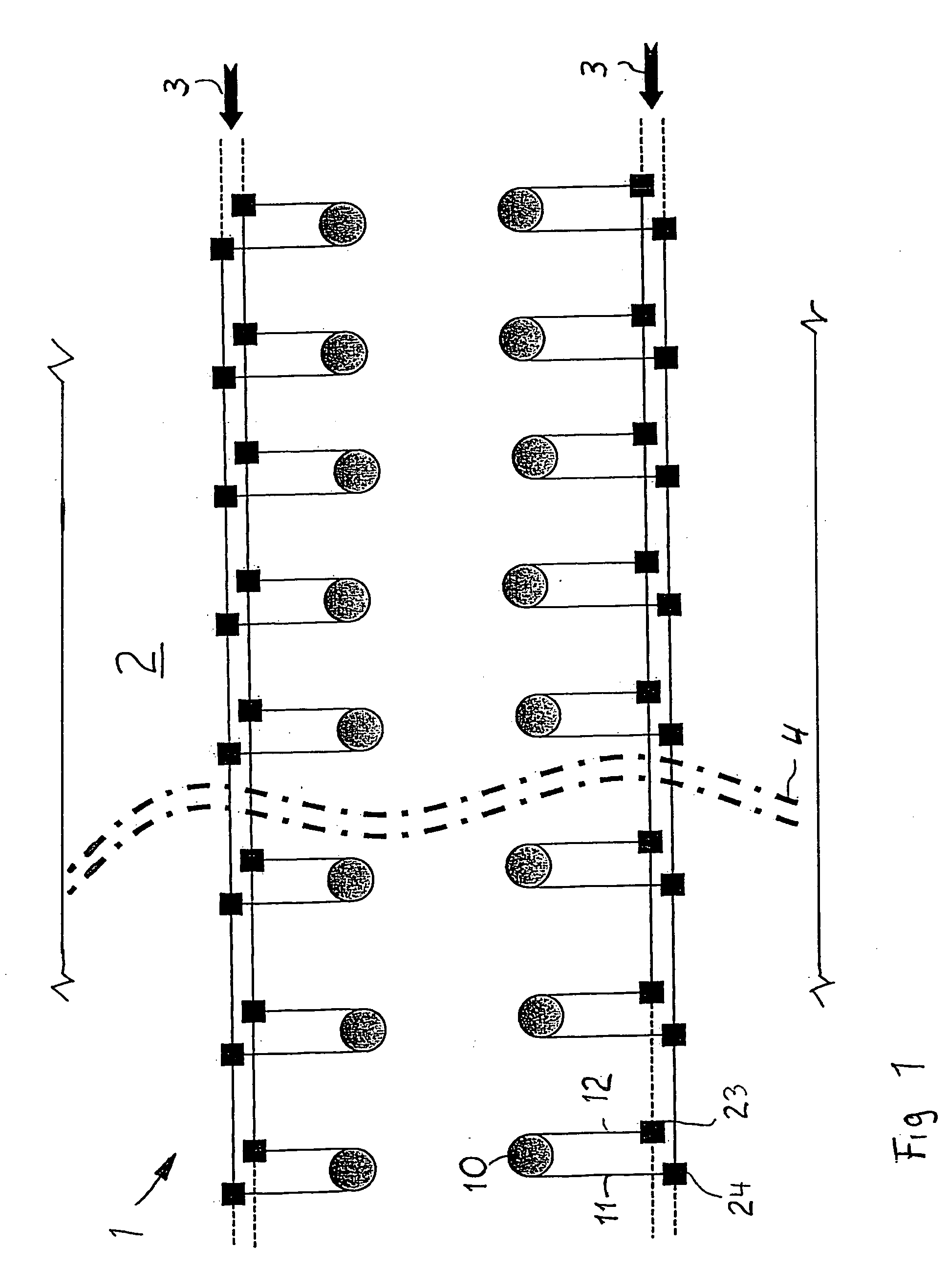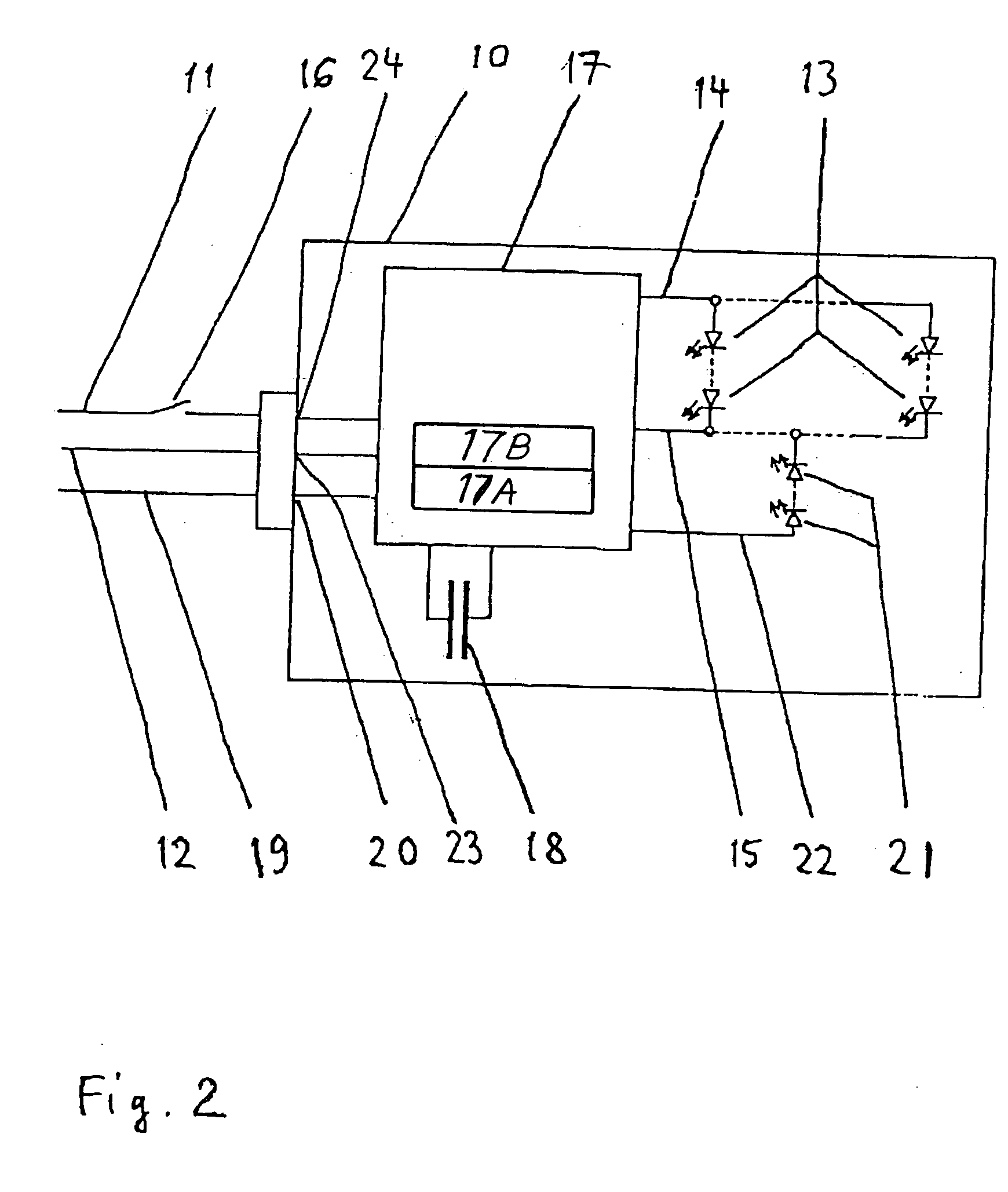Emergency lighting arrangement with decentralized emergency power supply for an aircraft
a technology for emergency lighting and aircraft, applied in the direction of identification means, landing aids, lighting support devices, etc., can solve the problems of increasing the total system weight, and reducing the overall system weight. , to achieve the effect of reducing the maintenance effort and expenditur
- Summary
- Abstract
- Description
- Claims
- Application Information
AI Technical Summary
Benefits of technology
Problems solved by technology
Method used
Image
Examples
Embodiment Construction
[0027]FIG. 1 schematically shows a first embodiment of an emergency lighting arrangement 1 including a plurality of emergency light units 10 arranged distributed in a passenger cabin 2 of an aircraft or other vehicle, and connected to an on-board electrical power supply network or grid 3. Each emergency light unit 10 is connected via two power supply connection lines 11 and 12 to two respective conductors or power buses of the on-board power supply network 3 via respective plugs, terminals or other connections 23 and 24. In this regard, the power supply connection line 11 may carry the typical on-board operating DC voltage potential, for example 28 V, while the connection line 12 carries the 0 V return potential (DC RTN) for example. The opposite polarity or connection is alternatively possible, as will be discussed below.
[0028] If the on-board power supply network 3 is fully functional and providing electrical power to the connected emergency light units 10, then the light units 1...
PUM
 Login to View More
Login to View More Abstract
Description
Claims
Application Information
 Login to View More
Login to View More - R&D
- Intellectual Property
- Life Sciences
- Materials
- Tech Scout
- Unparalleled Data Quality
- Higher Quality Content
- 60% Fewer Hallucinations
Browse by: Latest US Patents, China's latest patents, Technical Efficacy Thesaurus, Application Domain, Technology Topic, Popular Technical Reports.
© 2025 PatSnap. All rights reserved.Legal|Privacy policy|Modern Slavery Act Transparency Statement|Sitemap|About US| Contact US: help@patsnap.com



